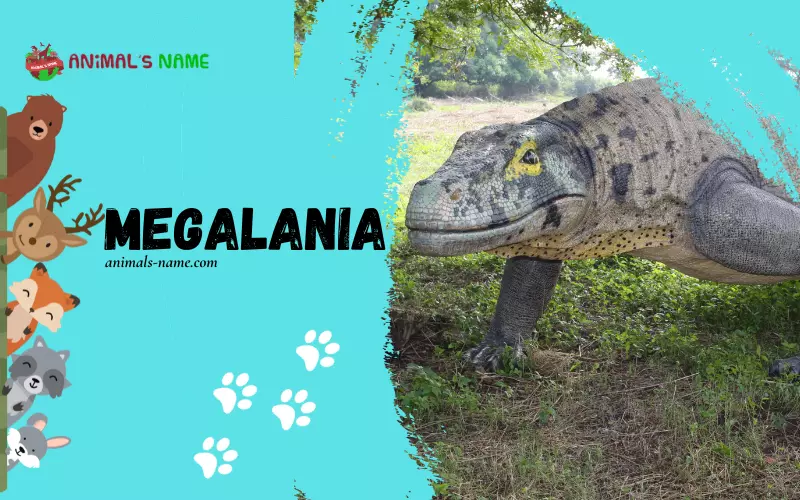Introducing our latest blog post, all about the fascinating reptile known as Megalania! This article will delve into this incredible creature’s history, facts, size, habitat, and classification. Before we begin, let us remind you that we already have an extensive article covering 155+ reptile names, so be sure to check that out, too! Megalania, also called the “giant ripper lizard,” was an enormous reptile during the Pleistocene era. This prehistoric creature was part of the monitor lizard family and was native to Australia. Despite its intimidating name, Megalania was not a dinosaur but rather an ancient relative of modern-day reptiles.
When it came to size, Megalania was truly impressive. This reptile could reach lengths of up to seven meters, making it one of the most giant lizards ever. It possessed sharp teeth and claws, making it an apex predator in its habitat. Speaking of habitat, Megalania resided in various landscapes, including woodlands, grasslands, and even dry regions. Its classification falls under Squamata, which includes many reptiles such as lizards and snakes.
History of Megalania
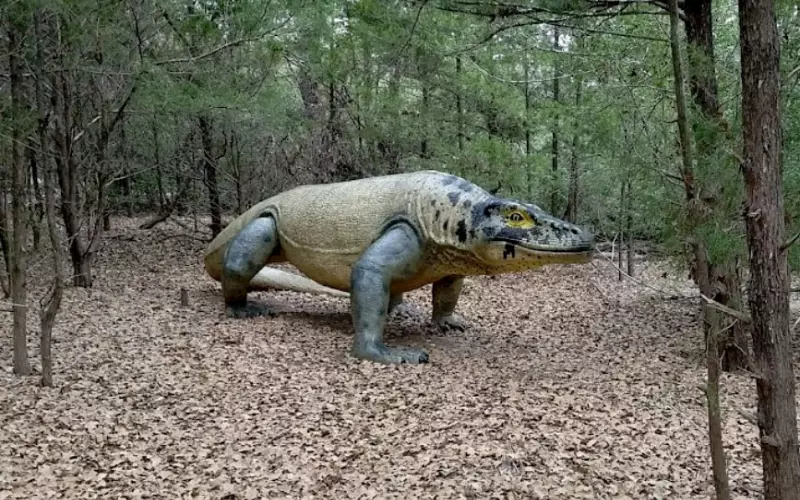
Megalania was an enormous reptile that lived on Earth long ago. It is said to have roamed the land around 30,000 to 50,000 years ago, during a time known as the Pleistocene era. Megalania was native to Australia and was often compared to a giant monitor lizard due to its similar appearance.
This great reptile was estimated to be around 17 feet long and may have weighed over a ton, making it one of the most giant land-dwelling reptiles ever known. Its robust body and muscular limbs allowed it to move swiftly across the land. Megalania had sharp teeth and is believed to have been a fierce predator, feeding on various animals then.
Sadly, Megalania went extinct thousands of years ago. The exact reasons for its extinction are unknown, but several theories have been proposed. Some scientists believe that changes in the environment, such as shifts in climate or the arrival of new predators, may have played a role in its demise. Others suggest that the arrival of humans, who may have hunted Megalania for food or driven it out of its habitat, could have contributed to its extinction.
Although Megalania is no longer with us today, its presence in our planet’s history reminds us of the incredible diversity of life that once thrived on Earth. It serves as a testament to the ever-changing nature of our planet and the importance of preserving and protecting the unique species that still exist today.
Importance of Megalania
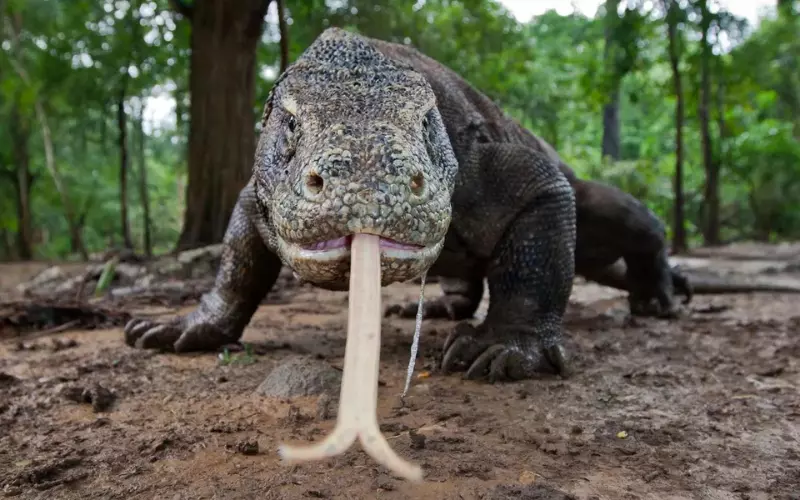
The Megalania reptile was an incredible and essential creature that lived long ago. Its existence is crucial in helping scientists understand Earth’s history and the evolution of animals. By studying the Megalania, scientists can learn more about the past and how animals have evolved to survive in different environments.
One reason the Megalania is essential is that it can tell us about the climate and environment of the past. Fossils of this reptile have been found in Australia, which suggests that the continent used to have a very different climate. By examining the remains of the Megalania, scientists can learn about the plants and animals that existed during that time and how they adapted to their surroundings.
Another reason why the Megalania is essential is because it shows us the diversity of life on Earth in the past. This reptile was a massive creature, reaching up to 20 feet. It was a top predator, meaning it was at the top of the food chain. Its existence tells us that there were many different types of animals during that time, each with its unique way of living and surviving.
The Megalania is a vital creature that helps scientists understand the past and how animals have changed throughout history. By studying its fossils, scientists can learn more about Earth’s climate, environment, and diversity of life long ago. The Megalania provides valuable insights into our planet’s history and the amazing creatures that once roamed the Earth.
Amazing Facts About Megalania
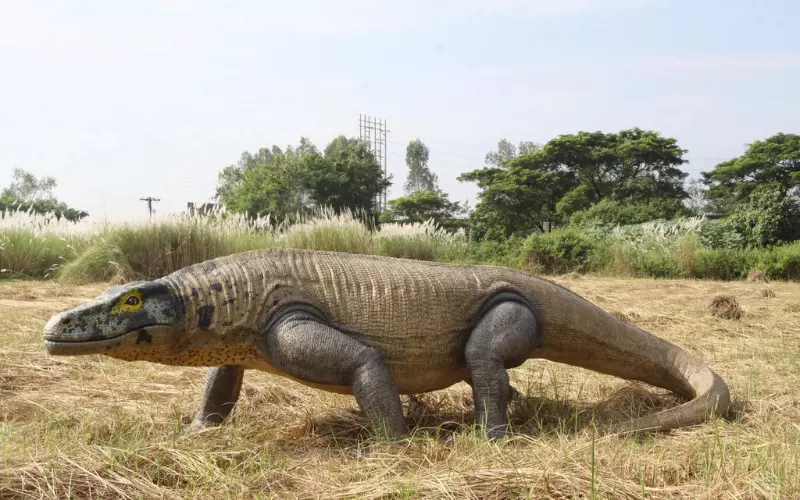
1. Megalania was a giant reptile living in Australia during the Pleistocene epoch, about 50,000 to 1.6 million years ago.
2. It is estimated that Megalania could grow up to 20 feet (6 meters) in length, making it one of the largest terrestrial reptiles ever lived.
3. Megalania belonged to the same family as modern-day monitor lizards, such as the Komodo dragon.
4. Its name, Megalania, means “giant roamer” in Greek, reflecting its impressive size and likely roaming behaviour.
5. Megalania had a long, slender body, strong limbs, and a sturdy tail that helped it move around and balance.
6. It had sharp, curved claws on its feet that would have been useful for climbing, hunting, and defending itself.
7. Megalania was a carnivorous predator, feeding on large mammals and other animals it could overpower.
8. Its teeth were sharp and serrated, allowing it to tear into its prey easily.
9. Megalania most likely used its keen sense of smell and excellent eyesight to locate and ambush its prey.
10. Fossils of Megalania have been found in various parts of Australia, suggesting that it inhabited a wide range of habitats.
11. Megalania is thought to have become extinct around the same time as other sizeable Australian megafauna, possibly due to climate change and/or human hunting.
12. Its closest living relatives are the goannas, still in Australia today.
13. Megalania lived when Australia was primarily isolated from other continental landmasses.
14. Its size and predatory nature would have made it a top predator in its ecosystem, competing with other large predators like marsupial lions and thylacines.
15. Scientists have been able to study Megalania through fossil remains and reconstructed skeletal models, helping us understand more about Australia’s unique prehistoric fauna.
Can we keep Megalania as our Pet?
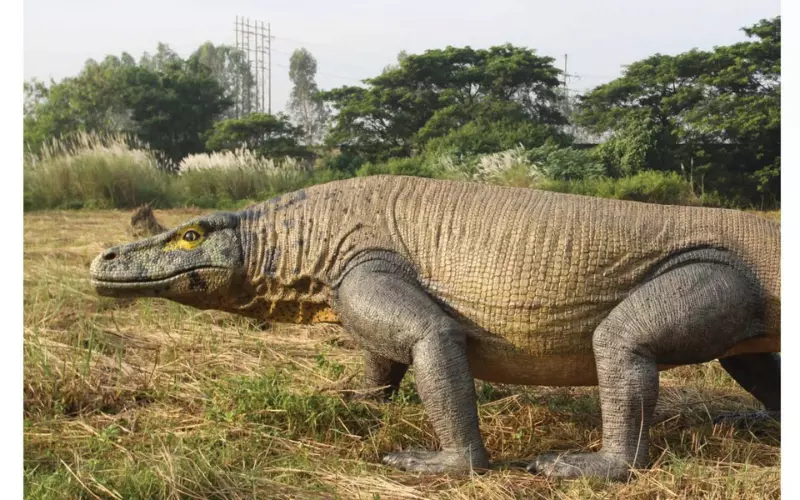
No, we cannot keep the Megalania reptile as our pet. The Megalania is an ancient reptile that lived a long time ago. Unfortunately, it is now extinct, which means it no longer exists on Earth.
The Megalania was a sizeable lizard-like creature that lived in Australia about 50,000 years ago. It was a fearsome predator, growing up to 7 meters long and weighing over one ton. Its sharp teeth and claws helped it hunt and capture prey.
However, the Megalania eventually disappeared from the Earth through natural processes and environmental changes. It is believed that a combination of factors, such as changes in climate and habitat and competition for food from other animals, contributed to its extinction. Since it no longer exists, we cannot keep the Megalania as a pet.
It is essential to understand that keeping pets requires caring for their needs and ensuring their well-being. Since the Megalania is extinct, we can’t provide the necessary care for them. Therefore, it is essential to respect that some animals are no longer around and focus on caring for the pets currently living with us.
Size of Megalania

Megalania was a giant reptile that lived in Australia around 40,000 years ago. It was one of the most giant land-dwelling reptiles ever discovered. Megalania was part of a group of animals called monitor lizards, which includes the modern-day Komodo dragon.
The size of Megalania was imposing. It measured about 23 feet long from its head to the tip of its tail. That’s as long as two cars parked end to end! It also stood about 6 feet tall, or as tall as a fully grown adult. Its body was covered in scales and had a long, slender snout filled with sharp teeth.
As a predator, Megalania would have been a fearsome sight. It had strong limbs with sharp claws, which it used to capture its prey. Scientists believe that it likely hunted large animals like kangaroos and giant wombats. Megalania used its size, strength, and stealth to surprise and overpower its victims.
Unfortunately, Megalania is now extinct, and we can only learn about it through fossils and scientific research. Its large size and terrifying appearance make it a fascinating creature to study. Even though we won’t encounter Megalania in the wild today, we can still marvel at this ancient reptile’s incredible size and strength.
Habitat of Megalania
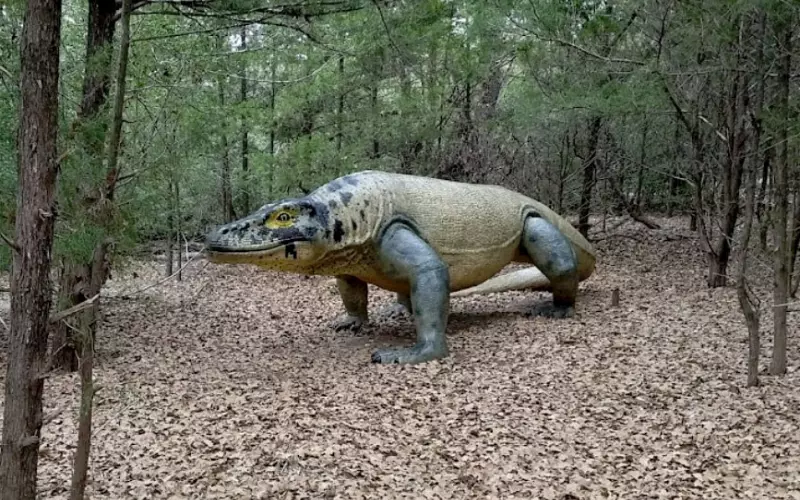
Megalania reptiles used to live in Australia long ago, during a time called the Pleistocene era. They roamed the landmass of Australia, which looked quite different from today. This giant lizard creature liked a warm and dry climate. It lived in various habitats, from dense forests to open woodlands and even arid regions.
In the dense forests, Megalania could find shade and protection from predators. It would crawl through the underbrush, using its strong legs and sharp claws to move around. These forests were filled with tall trees, giving Megalania plenty of hiding spots and prey to chase.
Megalania could bask in the sun in open woodlands and look for food more efficiently. These grassy areas had scattered trees and shrubs, giving Megalania easy access to shade and sunlight. It would often seek shelter under fallen logs or rocks during the hottest parts of the day. Megalania was an ambush predator who patiently waited for smaller animals to come close before striking.
In arid regions, Megalania had to adapt to survive. These areas had very little water and vegetation, so Megalania had to search extra hard for food and hide from the scorching sun. These reptiles had to be patient and find small pockets of water to drink from. They also used their excellent sense of smell to track prey, such as kangaroos or even smaller reptiles.
Overall, Megalania lived in different habitats all across Australia. Whether it was the dense forests, open woodlands, or arid regions, this giant lizard creature made the most of its surroundings to find food, shelter, and a suitable place to live.
Evolution of Megalania

Megalania was a fascinating reptile living in Australia thousands of years ago. It was a giant carnivorous lizard believed to be the largest lizard ever. But how did Megalania come to be?
The evolution of Megalania can be traced back to a group of reptiles called monitor lizards. These lizards are known for their long bodies, strong jaws, and sharp teeth. Over time, some monitor lizards in Australia started getting more significant. They needed to adapt to the changing environment and find enough food to survive.
These giant monitor lizards transformed into the monstrous Megalania as the years passed. As Australia’s climate changed and became hotter and drier, the smaller lizards couldn’t compete for food. The ones that got big and strong had a better chance of finding enough prey to survive. This led to the birth of Megalania.
Megalania had sharp teeth and powerful claws, which made it a fearsome predator. It could grow to 20 feet long and weigh over a thousand pounds. Unfortunately, Megalania disappeared from the Earth around 50,000 years ago, possibly due to changes in their habitat or competition with humans who arrived in the area.
Megalania evolved from smaller monitor lizards over a long period. The changing environment and competition for food played a significant role in their growth and development. Although Megalania is no longer around today, its fossils give us a glimpse into the incredible reptile that once roamed the ancient Australian landscape.
Classification of Megalania

Megalania is a prehistoric reptile that lived in Australia around 50,000 years ago. Scientists classify Megalania as a member of the family Varanidae, which also includes modern-day monitors like the Komodo dragon. This classification is based on shared physical traits, such as their long bodies, short legs, and sharp teeth. Megalania is known for being one of the most giant land-dwelling reptiles ever.
In more scientific terms, Megalania belongs to the order Squamata, which encompasses all scaled reptiles. Within this order, it falls under the suborder Lacertilia, which includes lizards. The family Varanidae is part of the suborder comprising monitor lizards, also known as goannas. Megalania falls within this family due to its similarities with modern-day monitors regarding its physical structure and behaviour.
Megalania was a carnivorous reptile, which means it primarily ate meat. It is believed to have been an ambush predator, patiently waiting for its prey and striking with its sharp teeth to secure a meal. With its large size, it could have hunted various animals, including other reptiles and mammals.
Megalania is classified as a member of the family Varanidae, which falls under the suborder Lacertilia in the order Squamata. It shares many physical characteristics with modern-day monitor lizards and is considered one of the most giant land-dwelling reptiles ever. Megalania was a carnivorous creature using its sharp teeth to hunt and feed various animals.
Different Types of Megalania
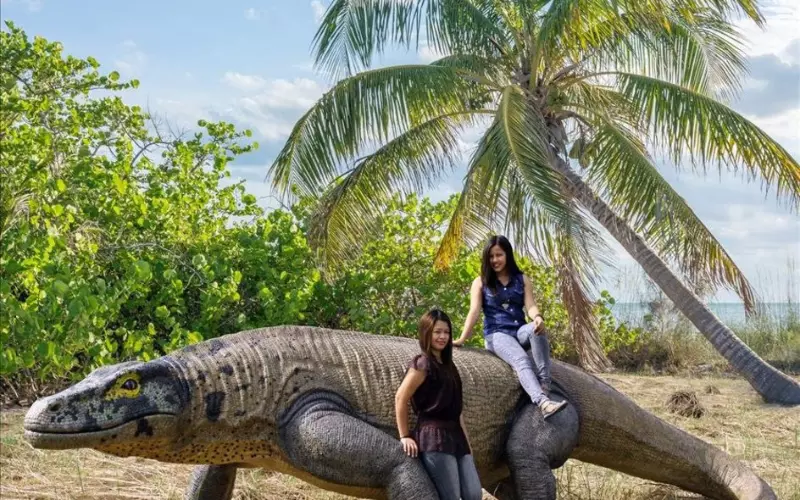
1. Megalania prisca: The largest known species of megalania, this reptile could grow up to 23 feet long and weigh over 1,000 pounds. It lived in Australia around 50,000 years ago, eating large mammals and reptiles.
2. Megalania murayii: Another species of megalania, it lived in Australia during the Quaternary period. It had sharp teeth and claws, allowing it to hunt and overpower its prey, which included kangaroos and other large animals.
3. Megalania robusta: This species of megalania lived in Australia over 100,000 years ago. It had a robust build and sharp teeth, ideal for hunting and feeding its preferred prey, including large marsupials and reptiles.
4. Megalania womaensis: Found in the limestone caves of Queensland, Australia, this species was part of the megalania family. It had a slender body and powerful jaws, feeding on smaller animals like bats, birds, and reptiles.
5. Megalania ramsayi: A smaller species of megalomania, it inhabited Australia during the Pleistocene epoch. With a length of about 16 feet, it had sufficient strength to overpower its prey, primarily herbivores like giant wombats and kangaroos.
6. Megalania diemenensis: Once present in Tasmania, this species of megalania became extinct around 40,000 years ago. Its large body and sharp teeth enabled it to hunt and feed on larger herbivores, including giant marsupials.
7. Megalania vangassei: Discovered in the Wellington Caves of New South Wales, Australia, this species of megalania existed around 40,000 years ago. Its diet mainly consisted of large mammals, reptiles, and birds that roamed the region during that time.
8. Megalania hpriti: Known to have lived in Queensland, Australia, during the Pleistocene era, this megalania species had an estimated length of 20 feet. Its fossil remains suggest it was a powerful predator, targeting large mammals as its primary food source.
9. Megalania kleinholzi: This species of megalania is believed to have lived in New South Wales, Australia, nearly 30,000 years ago. With its massive size and hunting capabilities, it likely fed on various animals, including large mammals and reptiles.
10. Megalania koopmani: Discovered in the Northern Territory of Australia, this species of megalania lived approximately 40,000 years ago. It had a robust build and sharp teeth, suggesting it was a formidable predator that hunted large mammals and reptiles for sustenance.
Geographical Presence of Megalania
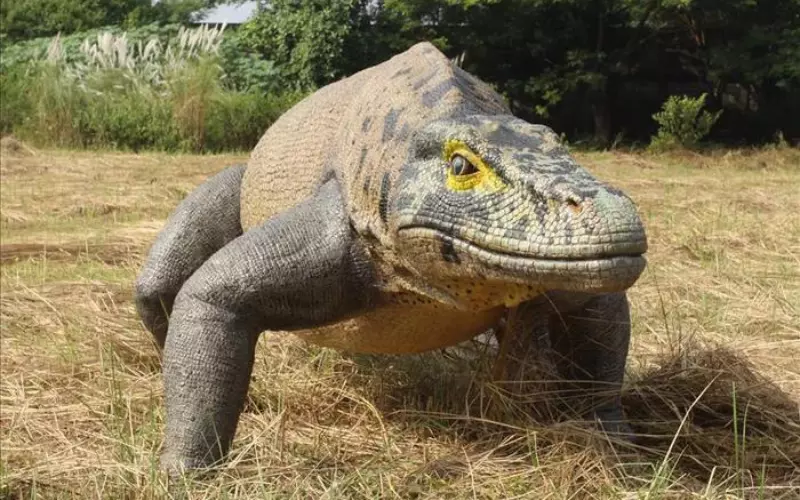
The Megalania reptile is native to the continent of Australia. This large lizard can be found in various regions, particularly in the eastern and southeastern parts. It prefers to dwell in dense forests, woodlands, and open grasslands. The Megalania is adapted to the warm climate of Australia, making it well-suited to survive in these regions.
However, the Megalania reptile is not found in other parts of the world. It is unique to Australia and is not seen in any other continent or country. This means you would not encounter this reptile if you travelled to places like North America, Europe, Africa, or Asia. It is exclusive to the Australian region and cannot be found elsewhere.
The Megalania reptile is found in Australia, particularly in the eastern and southeastern regions of the continent. It inhabits forests, woodlands, and grasslands, adapting well to Australia’s warm climate. However, if you are looking for Megalania outside of Australia, you will not find it as this reptile is exclusive to the country and cannot be found in any other part of the world.
Scientific Name of Megalania

The scientific name of the Megalania reptile is Varanus priscus. This enormous lizard lived in Australia during the Pleistocene epoch about 2.5 million to 11,700 years ago. It was a type of monitor lizard, similar to today’s Komodo dragon.
The first part of its scientific name, Varanus, is the genus name for monitor lizards. This name is given to animals with specific characteristics, such as their long necks and bodies, strong legs, and sharp claws. The second part of its scientific name, priscus, means “ancient” in Latin, representing how long this reptile existed.
Megalania was an incredible creature that could reach lengths of up to 23 feet (7 meters) long! It was a formidable predator known for its strong jaws and sharp teeth. It lived in forests and grasslands, feeding on mammals and anything it could catch. Unfortunately, the Megalania reptile became extinct due to climate change and the arrival of humans in Australia.
Diet of Megalania

Megalania, a giant reptile that lived long ago, had a meat diet. It was a fearsome predator, similar to modern-day Komodo dragons. These powerful creatures were at the top of the food chain in their environment.
Megalania had sharp teeth and a strong jaw that allowed it to hunt and eat prey. Its primary food source was other smaller animals like kangaroos, wombats, and reptiles. It may have also hunted birds and their eggs. Megalania used its sharp claws to catch and hold onto its prey while its teeth tore off chunks of meat.
Being a large predator, Megalania needed a lot of food to survive. It would often scavenge for carcasses to supplement its meals. This means that if Megalania came across a dead animal, it would gladly feed on it. Its strong sense of smell would help it find these food sources.
Megalania had a diet that mainly consisted of meat. It hunted and preyed on smaller animals, using its sharp teeth and powerful jaws. It would also scavenge for food when necessary. Many researchers believe Megalania’s diet was vital to its survival and dominance as a top predator.
Locomotion of Megalania
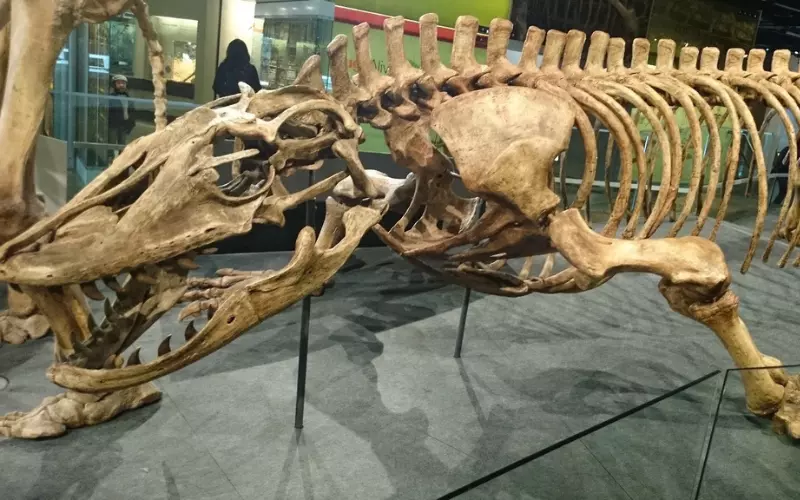
Megalania, a massive reptile that lived long ago, moved around using a particular way of locomotion. It had a unique walking style known as the “lateral undulation.” This means that it moved its body sideways to slither forward. This type of movement resembles how snakes crawl and slide across the ground.
Unlike humans, who walk using their legs, Megalania uses its entire body to propel itself forward. Its strong muscular body would create a rippling motion, pushing against the ground. By doing this, the reptile could move quite efficiently despite having no legs. This type of locomotion allowed Megalania to cover great distances quickly.
In short, the impressive Megalania reptile could move by bending its body sideways and creating a rippling motion. This enabled it to slither smoothly, just like how snakes move. Even though it had no legs, this unique way of locomotion helped Megalania travel far and effortlessly explore its surroundings.
Social and Sexual Behaviour of Megalania
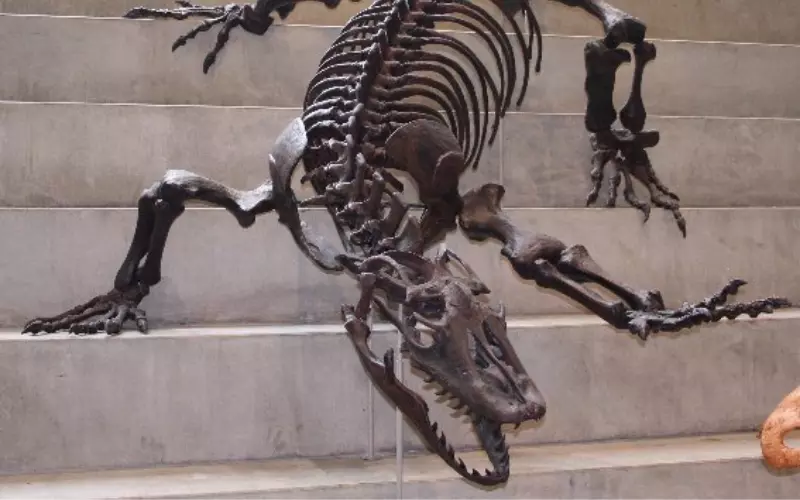
Megalania, a sizeable ancient reptile, had interesting social and sexual behaviour. These fascinating creatures lived in groups, which means they liked to be around other megalomaniacs. They would communicate using body language, sounds, and scents. By living together, megalanias could protect themselves from predators and help each other find food.
Male megalomaniacs would compete to catch females’ attention when finding a mate. They would often display their strength and size to impress the females. The female megalomaniac would choose the most impressive male to mate with. Once the female laid her eggs, she cared for them until they hatched, just like a mother cared for her babies. This way, the young megalomaniac would be safe and have a better chance of survival.
Melania had a fascinating social life and exciting ways of finding a partner. By living together in groups, they could help each other and stay protected. The males would compete to attract the females, and the females would carefully choose their mate. This behaviour helped the ancient reptile species survive and continue their existence for many years.
Reproduction and Lifecycle of Megalania
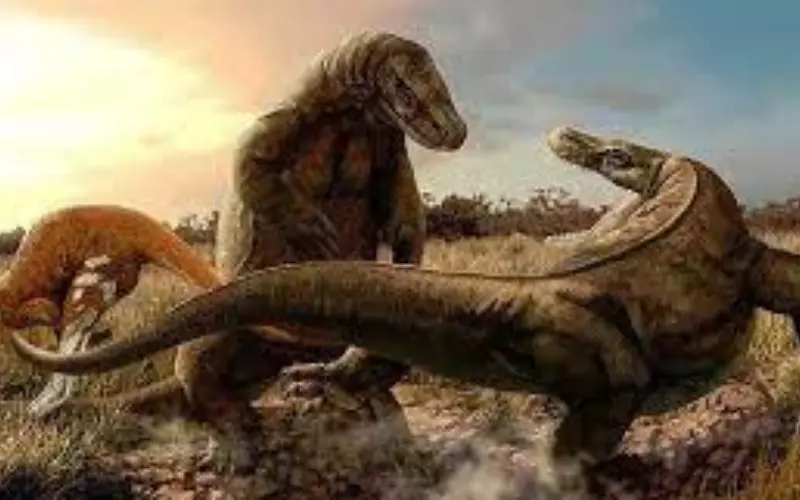
Megalania was a giant reptile that lived many years ago. Just like other reptiles, Megalania reproduced by laying eggs. The females would find a safe place, usually a hole in the ground, to lay their eggs. They would dig a deep hole to protect the eggs from predators and harsh weather conditions. Once the eggs were laid, the females would cover and leave them alone. Megalania did not care for the eggs or the babies once they hatched.
After a certain period, the eggs would hatch, and Megalania babies would come out. These babies were tiny and vulnerable to other animals. They had to learn how to survive independently from a very young age. They would search for food and shelter to protect themselves. As they grew, they would become more robust and more independent. They would continue to grow until they reached adulthood.
Megalania’s life cycle is similar to that of many reptiles. They start as eggs, hatch into babies, grow into adults, and then reproduce by laying their own eggs. This cycle continues throughout their lives. Despite being extinct now, Megalania’s life cycle offers a fascinating insight into the reproductive processes and challenges prehistoric reptiles face.
Threats to Megalania
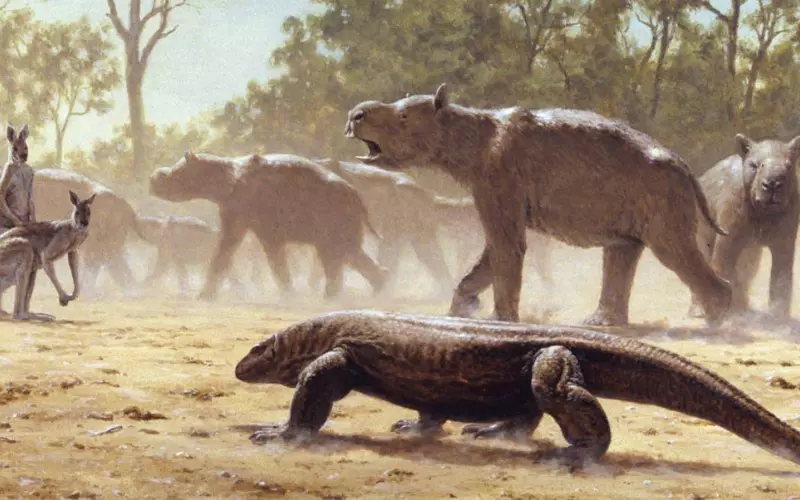
Megalania was a considerable reptile that lived long ago in Australia. It was a mighty creature, but it had some environmental threats. One of the biggest threats to Megalania was other predators. Megalania was a giant reptile, but there were other animals that were also big and very good at hunting. These predators could attack and eat Megalania, making life very dangerous.
Another threat to Megalania was the availability of food. Megalania was a carnivorous reptile, which means it only ate meat. It needed to find enough food to survive. However, if it couldn’t find enough food, Megalania could starve. Sometimes, when there was a food shortage in its environment, Megalania had to go on long journeys to find enough prey.
The third threat to Megalania was changes in the environment. Megalania lived during a time when the climate and landscape were changing. This meant that its habitat was also changing. These changes made it harder for Megalania to survive because it had to adapt to new conditions. If the changes happened too quickly, Megalania might not have been able to adapt fast enough and would have died out.
Megalania faced threats from other predators, food competition, and environmental changes. These challenges made it difficult for Megalania to survive. Life for Megalania was full of risks, and it had to constantly be on the lookout for danger and find enough food to survive. Despite being a powerful reptile, these threats ultimately contributed to its extinction.
Population of Megalania

The population of Megalania reptiles, also known as giant monitor lizards, is believed to have been relatively small during their existence. Scientists estimate that around a few thousand individuals lived in Australia before extinction. However, it is essential to note that these figures are just assumptions, not exact numbers.
Unfortunately, the megalania reptile is now extinct. It is believed that this extinction occurred around 40,000 years ago. The exact reasons for their extinction are not fully understood. Still, scientists believe that climate changes, the arrival of humans, and competition with other predators may have played a role in their demise.
Today, we can only learn about the megalomania reptiles by studying fossils and other remnants of their existence. These giant monitor lizards were once a part of our planet’s diverse range of species, but unfortunately, they are no longer found in the wild. Studying their fossils helps scientists gain insight into the ancient world and the different creatures that inhabited it.
Megalomania reptiles had a relatively small population, estimated to be a few thousand individuals. However, they have been extinct for around 40,000 years, and the reasons for their extinction are unclear. Scientists continue to study and learn from the remains of these fascinating reptiles to understand more about the past and the diversity of life on Earth.
Conclusion
Megalania is an incredibly fascinating reptile that once roamed the Earth millions of years ago. From its enormous size to its unique habitat, there is much to learn and appreciate about this extinct creature. Firstly, Megalania was an enormous reptile, reaching lengths of up to 20 feet! Its large size allowed it to dominate its habitat and hunt for prey effectively. This reptile was a skilled hunter, preying on other animals of its time, making it a formidable predator.
Secondly, Megalania had a wide range of habitats that it could adapt to. It lived in various environments, including forests, woodlands, and grasslands. This adaptability made it a versatile reptile, able to survive in different conditions.
Megalania was an ancient reptile that captivates our imagination with its immense size, diverse habitat, and fearsome reputation as a predator. Although it is no longer with us, learning about the history, facts, size, habitat, and classification of such reptiles allows us to understand better the diverse world of creatures that once inhabited our planet. By studying these ancient creatures, we can gain valuable insights into the natural world and our place within it.
Frequently Asked Questions about Megalania (FAQ’s)
What is a Megalania reptile?
Megalania reptiles are extinct giant monitor lizards that lived in Australia during the Pleistocene epoch.
How big did Megalania reptiles grow?
Megalania reptiles were estimated to grow up to 7 meters (23 feet) in length, making them the largest known terrestrial lizard.
When did Megalania reptiles exist?
Megalania reptiles existed between 1.6 million and 50,000 years ago.
What did Megalania reptiles eat?
Megalania reptiles were carnivorous, meaning they primarily ate meat. They likely preyed on large mammals, birds, and reptiles.
Were Megalania reptiles venomous?
There is no concrete evidence to confirm whether Megalania reptiles were venomous, although some studies suggest they might have possessed venom glands.
Did Megalania reptiles live in groups?
It is believed that Megalania reptiles were generally solitary animals, although some evidence suggests they may have lived in family groups during certain times.
Were Megalania reptiles related to Komodo dragons?
Megalania reptiles and Komodo dragons belong to the same family, Varanidae, but they are not direct ancestors or descendants. They shared a common ancestor that existed millions of years ago.
Where were Megalania reptile fossils discovered?
Megalania reptile fossils have been predominantly found in Australia, particularly in the southeastern region.
How were Megalania reptiles capable of such large size?
The large size of Megalania reptiles is believed to result from island gigantism, as they existed on the Australian continent when it was still isolated.
Are there any surviving relatives of Megalania reptiles today?
The closest living relatives to Megalania reptiles are the Komodo dragons and other monitor lizards, but they are not direct descendants.
Were Megalania reptiles agile climbers?
Megalania reptiles were likely capable climbers due to their strong limbs and sharp claws, which would have enabled them to climb trees or cliffs.
Could Megalania reptiles swim?
It is unclear whether Megalania reptiles were proficient swimmers, but their body structure suggests they could swim short distances.
Did Megalania reptiles have any natural predators?
The lack of direct evidence makes it difficult to determine if Megalania reptiles had any natural predators, but it is possible that larger carnivorous mammals could have posed a threat.
How did Megalania reptiles reproduce?
There is no concrete evidence of the reproductive behaviour of Megalania reptiles, but they were likely oviparous, meaning they laid eggs.
Why did Megalania reptiles go extinct?
The exact reasons for the extinction of Megalania reptiles are still debated, but climate change, habitat loss, and competition with other predators have been suggested as contributing factors.

Hey there, I’m Tyler Swan! I worked as an Animal Care Specialist at Neuralink and completed my education at the University of California, Davis. Animals have always fascinated me, so I chose to study and work with them.
In my job, I take care of animals and make sure they’re healthy and happy. I’ve had cool roles like Lab Manager and Senior Research Assistant at Mitloehner Lab, where I’ve learned much about animals.
I’m not just about work, though. I love animals so much that I write articles about them! I enjoy sharing fun and interesting facts about our furry and feathered friends.
If you ever want to know more about animals or need help with animal info, ask! I’m here to make learning about animals easy and fun, just like chatting with friends.

